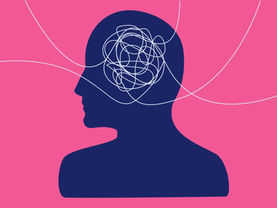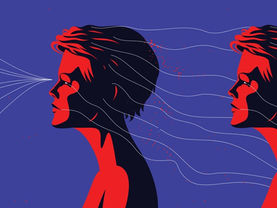Maladaptive daydreaming: Being trapped in your head to escape reality
- Kajal Taraate

- Aug 23
- 2 min read
Your mind is your most valuable asset, but without imagination, it will be rendered as an empty vessel. It can be your sharpest tool or your deadliest trap. It is hence crucial to find the perfect balance, but it's perplexing even for people who have essentially lived their whole lives; so, it's no wonder that our young minds struggle with it even more than we expect.
Picture this, you're sitting in a class, the teacher goes on and on, but you aren't here, well, at least not physically, perhaps you're off somewhere on a walk in some faraway country or saving our planet from an alien invasion. These daydreams feel harmless till you realise that you missed the entirety of the lecture again, and now you're completely lost on what to do on your upcoming exam ( and yes, if you're wondering this happened to me many times).
We all daydream; it is one of the most normal and human things to do, but there is a vast difference between maladaptive daydreaming and our mind wandering a bit. Although it's not officially in the DSM-5, researchers are studying it as a potential mental health condition. Maldaptive daydreaming, in layman's language, is defined as a potential mental health condition characterised by excessive, elaborate, and vivid daydreaming that interferes with a person's daily life and functioning. It is often triggered by music, movies, or repetitive actions and can last for hours.
This occurs due to a number of reasons. It might develop as a way to cope with stress, loneliness, or past trauma, or it can stem from having a highly creative mind. For some teens, it’s linked to conditions like anxiety, depression, or ADHD.
Common signs and signals:
1.Spending hours a day in fantasy worlds.
2.Feeling compelled to daydream, sometimes preferring it over real-life interactions.
3.Using daydreaming to escape from stress, anxiety, boredom, or even trauma
4.Pacing, rocking, or repetitive movements while daydreaming.
5. Emotional connection to fictional characters or imagined people,sometimes even more so than real people.
This may still feel harmless and even fun/whimsical to many people, but it causes numerous problems. Like poor grades because you simply can't pay attention, or procrastinating on important tasks. It can even lead to strained friendships from zoning out or a lack of sleep due to late night “story sessions.” Even feelings of guilt or frustration arise from not being able to stop.
Maldaptive daydreaming is especially challenging for teens since adolescence is already a time of big changes (socially, emotionally, and academically). While anyone can experience it, teens may be more susceptible since they’re juggling school pressures, developing friendships, and figuring out their identity. Over time, it can lead to a habit of escaping from problems instead of facing them.
Hence, we need to develop self-awareness and boundaries, and track when and why we daydream and put a set limit on it. Meditation or grounding exercises to stay in the moment, or channeling your imagination into writing, art, music, or drama can be highly beneficial.
If the situation is too severe, it's advised to consult a counselor, psychologist, or trusted adult.















Comments